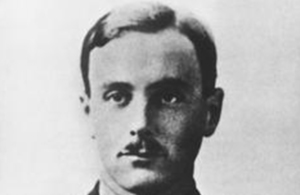WW1 South African VC recipient Robert Vaughan Gorle
The story of South African First World War Victoria Cross recipient Robert Vaughan Gorle.

Robert Vaughan Gorle [Credit: © IWM (detail of VC 465)]
14 men from South Africa received the Victoria Cross, Britain’s highest award for gallantry, during the First World War. As part of the Centenary Commemorations the people of the United Kingdom marked their gratitude to those courageous men by presenting a bronze memorial plaque to their home country engraved with their names. The plaque is now displayed at the Castle of Good Hope, Capetown. This archive tells their stories.
Name: Robert Vaughan Gorle
DOB: 6 March 1896
Place of Birth: Southsea, England
Date of Action: 1 October 1918
Place of Action: Ledeghem, Belgium
Rank: Temporary Lieutenant
Regiment: ‘A’ Bty. 50th Brigade, Royal Field Artillery, British Army
Robert Vaughan Gorle was born in Southsea, England, on 6 March 1896. Before the war he was working as a farmer in South Africa. He was 22 years old and a temporary Lieutenant with the Royal Field Artillery in the British Army when he was awarded his Victoria Cross on 1 October 1918, in Ledeghem, Belgium. His citation in the London Gazette reads:
For most conspicuous bravery, initiative and devotion to duty during the attack on Ledeghem on 1st October, 1918, when in command of an 18-pdr. gun working in close conjunction with infantry. He brought his gun into action in the most exposed positions on four separate occasions, and disposed of enemy machine guns by firing over open sights under direct machine-gun fire at 500 to 600 yards’ range. Later, seeing that the infantry were being driven back by intense hostile fire, he, without hesitation, galloped his gun in front of the leading infantry, and on 2 occasions knocked out enemy machine guns which were causing the trouble. His disregard of personal safety and dash were a magnificent example to the wavering line, which rallied and re-took the northern end of the village.
After the war Gorle returned to South Africa, married, and had a family. He died in Durban in 1937. His Victoria Cross is part of the Lord Ashcroft collection at the Imperial War Museum.